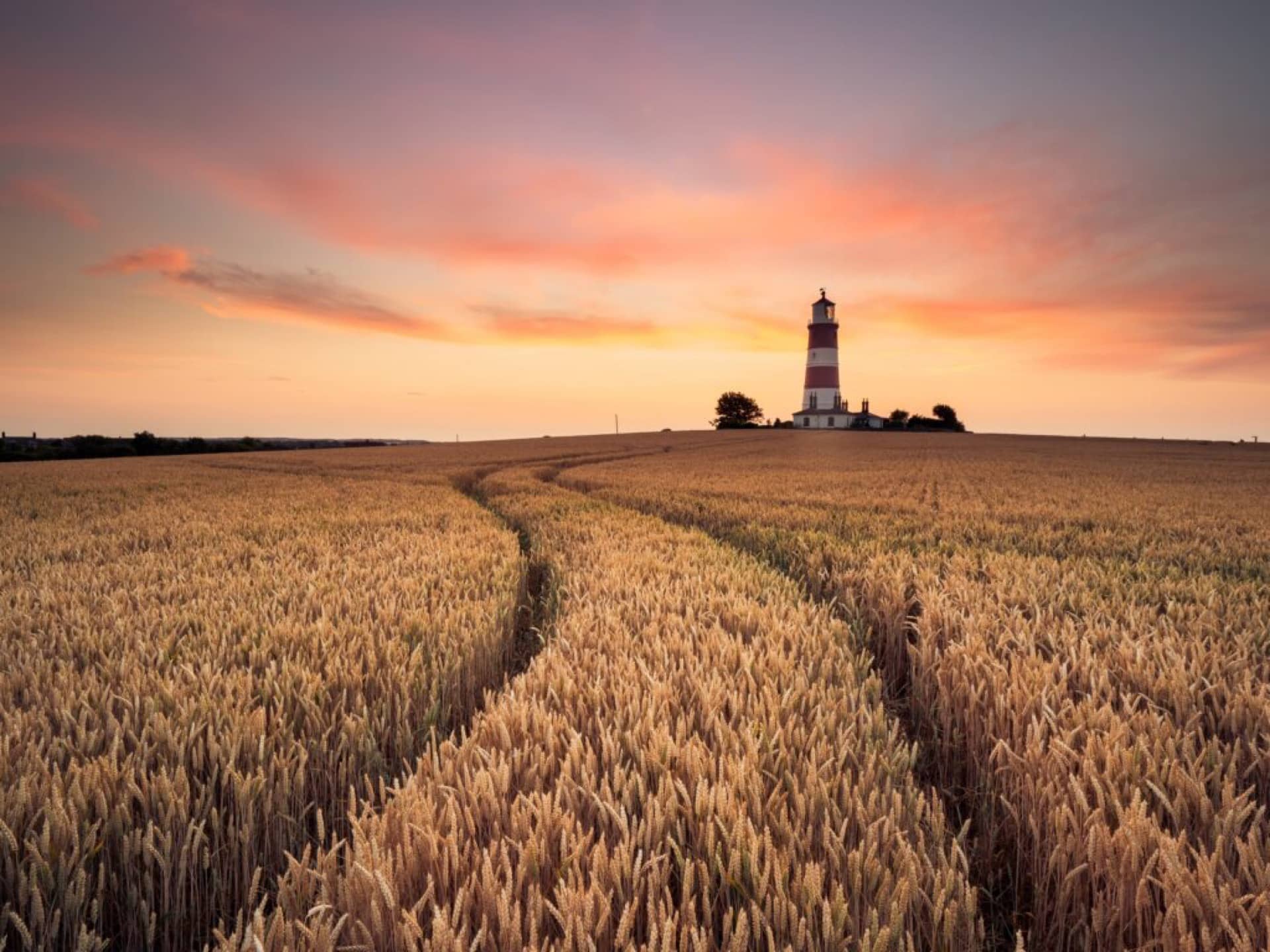
The Legless Ghost of Happisburgh
Happisburgh is a place of shifting boundaries, land and sea, time and space, life and death. Even the name changes, depending on where you’re from. Those in the know say ‘Haze-burr’, anything else just sounds strange. And talking of strange things, here’s a gruesome ghost story for winter nights.
There were once some farmers heading home for supper and a flagon of ale. Near Cart Gap they saw a figure lurching towards the village, clutching a filthy sack. He seemed to be a poor hunch-backed sailor but something was very wrong. Peering through the gathering dusk the farmers were struck with sickening horror. That was no hump, but a nearly severed head, hanging by a single ribbon of flesh, thudding against the spectre’s spine as it walked. Yet how did it walk? For the grisly creature had no legs!
Terrified, the farmers hotfooted it to the inn. (We’d wager the phantom wasn’t the only one completely legless that night!) After more sightings, the gruesome ghost was followed to the grassy triangle where Whimpwell Street meets Whimpwell Green and Coronation Road. There it vanished into a well. A brave young man lowered himself down, groping in the gloom. There was the sack! And inside were sailor’s boots…with sailor’s legs still inside! The well was drained. And there was another sack, containing a torso in sailor’s uniform, its hideous skull dangling by a strip of rotting flesh.
Smugglers’ tale or true? We dare you to investigate…

Brother Pacificus Of Ranworth
Deep in the Norfolk Broads, close to where the Ant and Bure rivers meet, is the ruined Abbey of St Benet’s at Holme. It’s a remote place for peaceful souls to paint, read and watch the boats go by. Surrounded by lonely marshes, it suited the reclusive order of black-cowled monks who dwelt here for centuries. The abbey was the only religious house in England to survive Henry VIII’s Dissolution of the Monasteries, although nonetheless by 1540 the last monk had gone. All but one, who’s seen here still…
It’s said gentle Brother Pacificus was given the task of mending an ornate screen at St Helen’s church in Ranworth. At dawn he would row across Ranworth Broad to St Helen’s and at the end of each day, he would row back to the Abbey, his little dog panting eagerly at the prow. One evening he returned to find his brother monks had been savagely murdered by Henry VIII’s soldiers. Devastated Brother Pacificus lingered alone at the stricken Abbey until his death when mourning villagers laid him to rest him at St Helen’s, the church he loved so well.
Some have seen his kindly ghost rowing through the morning mist at first light and some in the haze of a quiet summer evening. Wearing his habit, he rows a small boat across the Broad, his faithful dog still by his side. Others have seen him at prayer in St Helen’s, although if you approach he fades softly into the past.
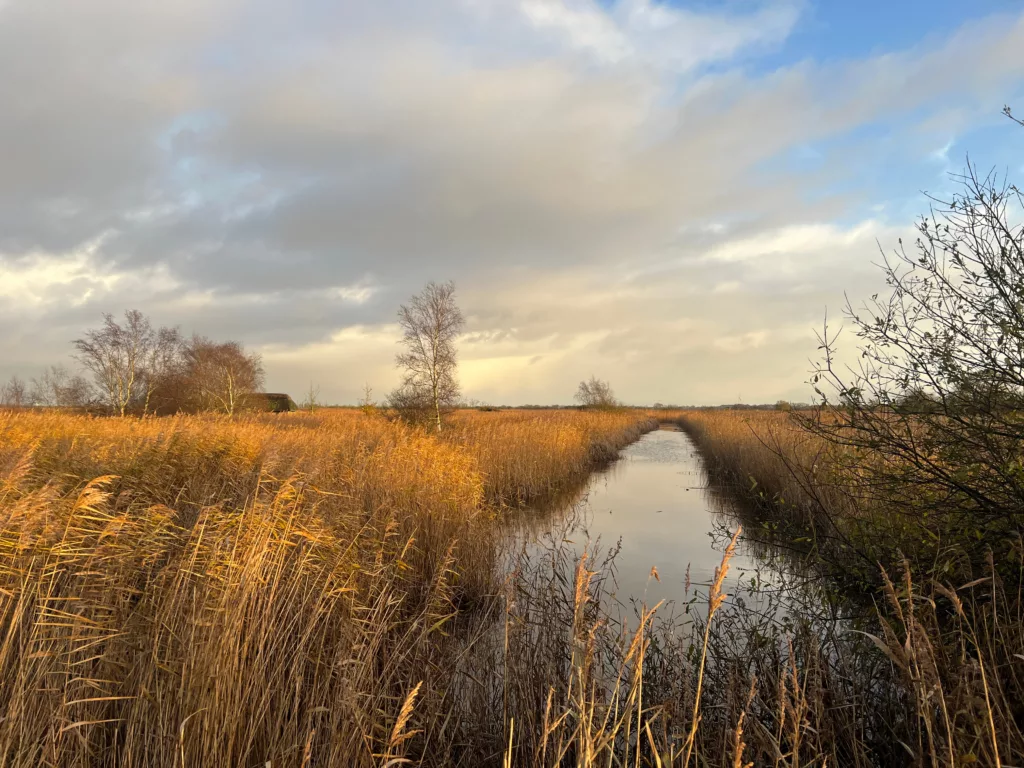
The Twilight Broads
Hickling Broad holds its secrets close. A sunken place of reed beds and woodland carr, created from Medieval peat pits, dug for fuel. Now the Norfolk Broads are a magical world of shining water and silver reeds, magnificently mysterious in the deep winter twilight.
From the Norfolk Wildlife Trust car park walk away from the reserve entrance, back along the lane just travelled. Find the track a few hundred metres to your right and follow it to Stubbs Mill where a platform keeps feet dry. This is an atmospheric place to watch fiery winter sunsets over miles of swaying reeds. Short-eared owls quarter the banks, soft brown with piercing yellow eyes, they’re visitors from lonely places. As shadows darken marsh harriers arrive, impressive birds fighting back from the brink of extinction. Norfolk is their stronghold. Rare elsewhere, here you might see up to seventy birds circling their roost, an unforgettable spectacle. If you’re lucky, the best is yet to come. Huge cranes, an endangered species, return at the dying of the light, necks outstretched, calling through the purple dusk. A beautiful, triumphant sound, it fills the air, bewitching landscape and memory. Out in this watery land sit the haunted ruins of Brograve Mill. Decayed, dangerous and unreachable on foot, only barn owls find safe places to roost among its broken timbers; only sand dunes protect it from the surging winter sea. Darkness has fallen. Switch on your torch and head to a cosy local for some excellent Norfolk food.
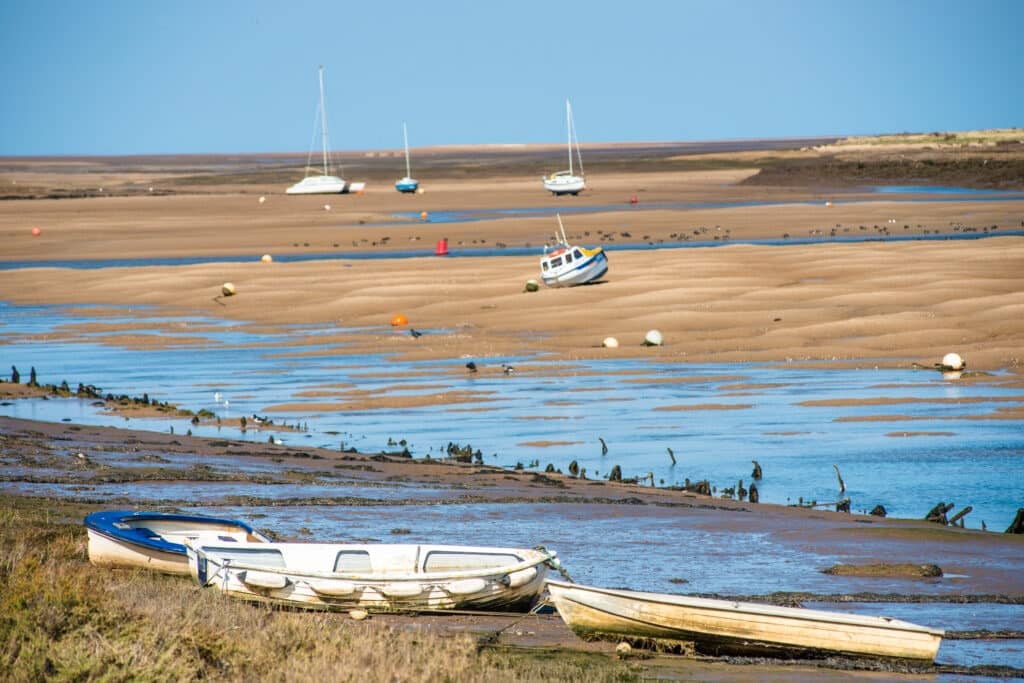
Dawn Flight
It’s bitterly cold. Yet January is an excellent time to head outside and witness one of Britain’s most magnificent dawn experiences. Huddle in the shelter of sand dunes or a Wells beach hut. And wait.
Light glimmers in the east. Day is breaking and with it, an awakening. Ragged cries spike the dark silence. Slowly, quietly it begins. Excitement mounts in rousing crescendos, spreading among thousands of wildfowl, restless on the cold mud.
And then they rise. A wild chorus fills the air, elemental and unrelenting. Thousands of pink footed geese lift almost as one continuous wave of breathtaking joy. Great skeins make V patterns overhead, calling all the while, formations shaping the fading dark. Over the watchers they fly inland, hungry from their night fast, searching for sugar beet tops in newly harvested fields.
In the not too distant past, wildfowlers lined up here, guns loaded to shoot the birds down. Professional wildfowling guides were a cutthroat bunch, guarding their secret shooting locations well. Around this time, Sir Peter Scott, son of the polar explorer Robert Falcon Scott, wrote his book Morning Flight, describing being here as a pilgrimage. His love of such glorious natural spectacle surely informed his work as a conservationist. He established the Wildfowl and Wetlands Trust (WWT) in 1946 and later co-founded the World Wildlife Fund.
And so, morning has come and the geese are off to find breakfast. Time you head back to the warmth of Wells and do the same!

Northerly Wind at Cley Beach
Charge up your Vitamin D, boost your immune function and re-charge your serotonin levels; learn to love the outdoors in winter! Head to Cley-next-the-Sea, where Norfolk’s big skies are at their most spectacular. Arctic winds race across the North Sea unhindered until they slam into Norfolk, the first land mass to break their howling path from the far north. Yes, it’s cold. But it’s also awe inspiring.
Storm chasers will see a stunning elemental clash of land and sea. Stride into the wind towards the shingle ridge at Cley Beach. Pebbles, rounded and polished under your boots skitter back as you cross the divide between shelter and storm. Breaking the ridge, a wild world opens out in front of you; a maelstrom of iron grey sea, waves slashed with white foam, crashing onto the shore. Breakers push and shove the clattering stones, relentlessly moving them along the coast. Embrace the majesty of nature in winter, layer up well and hunker down with a thermos of something hot, protection against the biting cold. You’ll meet a few other hardy souls out in the exhilarating wind. Photographers and birdwatchers, looking for gannets, piratical skuas riding the tempest from the far north and rare sightings of puffins, blown off course by driving winds. This season is a time for movement, change and survival. When the wind’s pierced every layer of clothing, time to warm up in Cley village. Leave the beach to its storms, take the memories with you.
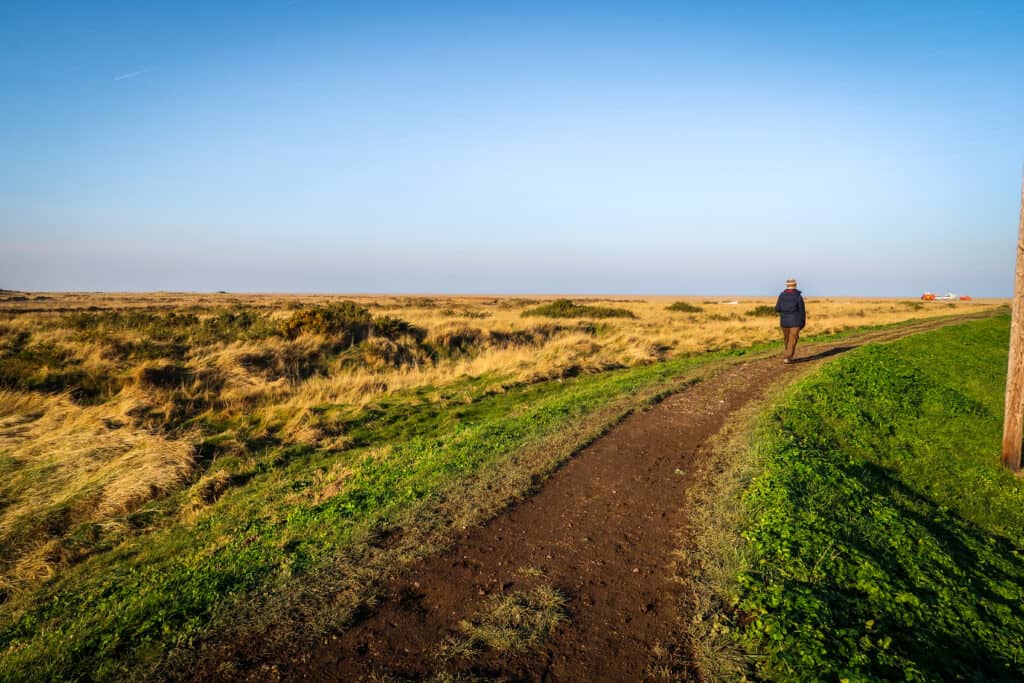
Salthouse Heath
There’s something about a winter afternoon in Salthouse that tugs the heart. Perhaps its the pale coastal light pouring through church windows, or smell of woodsmoke from cottages near the Heath. Maybe it’s the Heath itself, its wildness and sense of ancient lives whose stories are held by the earth, just beyond our sight.
Salthouse Heath was formed by melting glaciers thousands of years ago and is part of the geological Cromer Ridge. The rich mosaic of dry acid heath and grassland, fragrant gorse and broad-leaved woodland also guards a wealth of archaeological treasures. There are 11 scheduled monuments and a Bronze Age cemetery. And the remains of a World War II radar station to the north of the heath.
Heathland once defined much of Norfolk, yet is now a rare habitat. The 99-hectares of dry coastal heathland at Salthouse is one of the last remaining examples. Stand on this escarpment and drink in the stunning panorama of marsh, water, land and sea. It’s one of the most splendid views in Norfolk. From Cley Marsh Visitor Centre head towards the East Bank. Cross the coast road, follow the path through Walsey Hills, up past Great Hulver Hill and continue to Bridgefoot Lane. Turn left until you meet the path across onto Bard Hill, then head across the heath east towards Bloomstile Lane and just follow the road as it saunters down to Salthouse village where The Dun Cow pub will have the fire lit and a welcome waiting.

Ancient Barrows and Dark Skies
Barrow Common is a nature-rich County Wildlife Site and there’s a long human history here too. The remains of an ancient mound and round barrow mean you walk in the footsteps of the ancestors. And as a designated Dark Sky site, you can look even further back, into deep time and the ancient cosmos. Barrow Common is classed as a ‘Milky Way Plus’ site, meaning there’s the potential for breathtaking views of the stars on clear nights. The local astronomy club has fantastic telescopes, so check out their website to find regular open public events at Barrow Common and around West Norfolk.
Predominantly acid grassland the rolling Common is edged by woodland, part of a mosaic of natural habitats. From high on the ridge there are dramatic views over a patchwork of natural coastal habitats out towards the sea. This strategic vantage point was well used in less peaceful times. In 1940 a Second World War radar station was built facing the sea, installed with a ‘bedstead’ aerial mounted on the roof, intended to detect suspicious low flying aircraft up to 35 miles across the North Sea. The lookout was manned until 1944, after which it was closed, but can still be seen on the north-west side of the site.
A good starting point for a winter walk is Brancaster where the Jolly Sailor and the White Horse are two excellent foodie pubs to fuel up before your adventure or to settle in for a cosy evening afterwards.
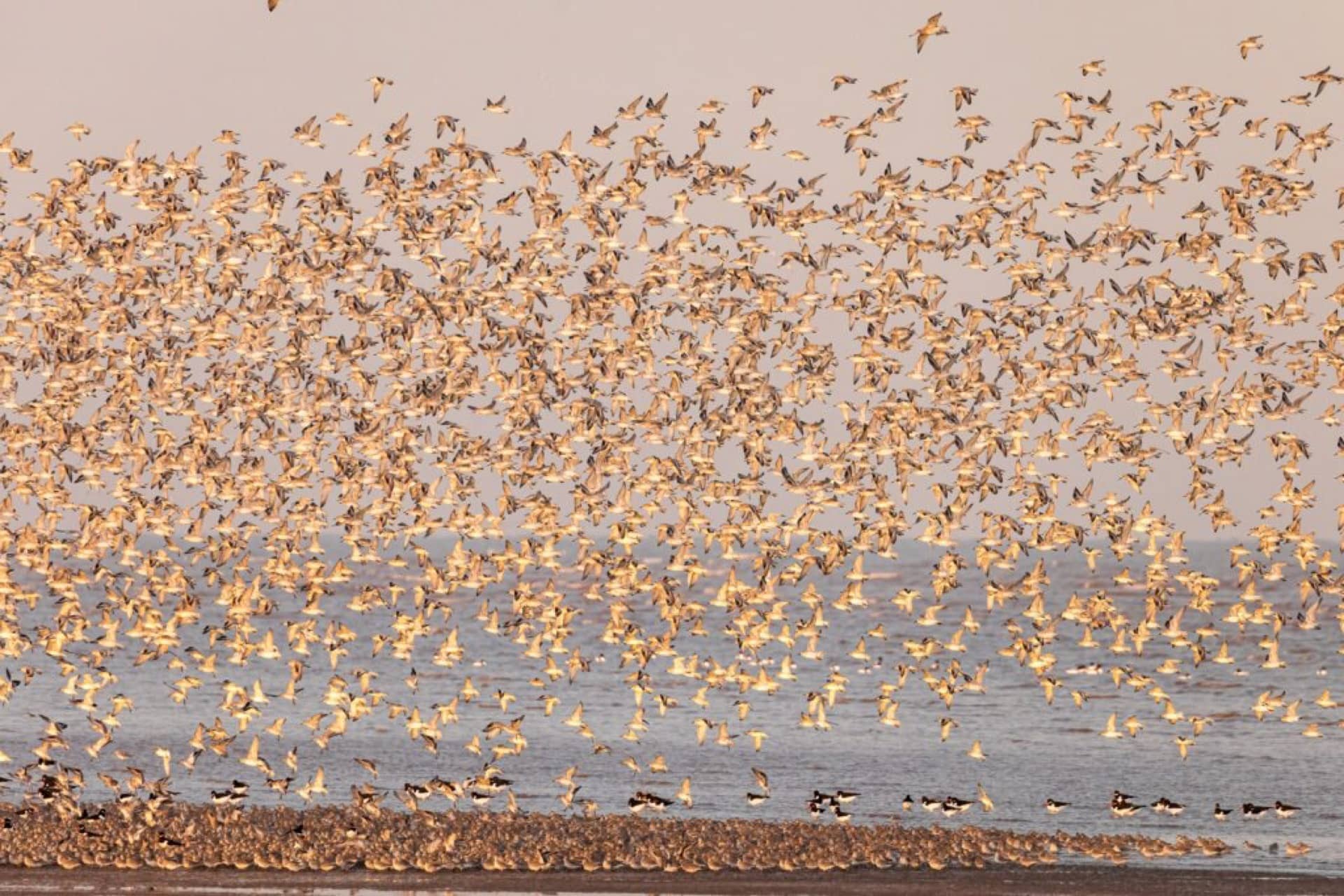
A Storm of Birds
Visit to Snettisham RSPB Nature Reserve – see unique natural spectacle of thousands of birds in flight on the highest tide of the year.
High tide roosts are a natural spectacle that reach their peak on spring high tides. Although the spectacle still happens outside of the highest tide and the geese are consistent during the Autumn and winter months.
At RSPB Snettisham, the highest tides give rise to an astonishing phenomenon. A natural wonder of the world, these epic aerial displays happen just a few times a year and are never the same twice.
This a wild, liminal land of lagoons, tidal mudflats, shingle beach and saltmarsh. Part of the wider Wash, it’s a refuge for many thousands of wildfowl and wading birds including Red Knot, Dunlin, Plovers, Oystercatchers and Bar-tailed Godwits who stalk the mud hunting for shellfish and worms. During the highest tides, known as Spring or King Tides, salt water completely covers the mud. Only then will these thousands of birds take to the air in a fluid symphony of sound and movement. This extraordinary winged ballet is choreographed by instinct, season and weather.
Because Spring Tides are rare, it’s essential to check the date and time before your trip.
If you can’t make a high tide, how about a frosty sunrise? Winter is the season of pink-footed geese, arriving in their thousands from summer breeding grounds in Iceland. Roosting on The Wash mudflats, vast skeins of beating wings fill the skies at first light as they fly inland to feast on sugar beet fields. On icy mornings, it’s tempting to stay tucked up in bed, but witnessing the haunting calls of wild geese at first light is one of life’s most exhilarating and unforgettable experiences. Truly a Norfolk spectacle not to be missed.
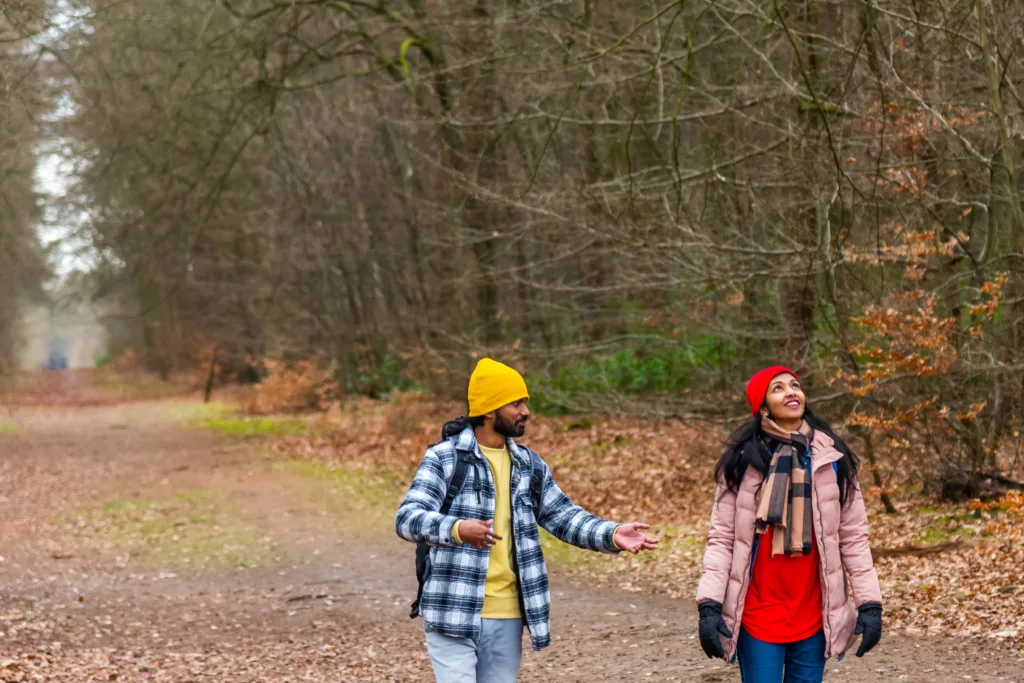
The Phantom Rabbit of Thetford
Think Black Shuck is terrifying? You ain’t seen nothing yet! Slavering hell hounds bow to Thetford’s phantom rabbit. It guards the doorway of a rare medieval rabbit warrener’s lodge, where thousands of rabbits were once raised – and killed for food and fur. If you’re wondering what could be scary about a cute little bunny, be warned that this one is a giant ghost with flaming red eyes. Oh, and seeing it is an omen of death. Just saying.
If blood-curdling rabbits aren’t hair-raising enough, some speak of an unsettling figure wandering the woodland walks around the lodge, muttering in strange dialects from a shuddering two-dimensional face. Horrifed witnesses say this chilling visage peers from the first floor window where another ghastly face is sometimes glimpsed, with gaping black holes where the eyes and mouth should be. Trouble is, there is no first floor anymore. Gulp! The lodge at Thetford was built to accommodate hunting parties on the ‘sands’ of Breckland. Perhaps that should be haunting parties?
Once this lodge was the most prolific producer of rabbit meat and skins in the county, but rabbits aren’t actually native to these islands. It’s likely they were introduced by the Romans so there’s no Old English, Celtic or Germanic word for rabbit. We’ve borrowed ours from French. There was an older term, ‘coney’, pronounced like the Irish and derived from the Latin ‘cunīculus’. It was dropped when British slang picked it up as a pun for something rather different.

Thetford Castle
In the historic market town of Thetford stands the largest earthen motte in England. Climb 40 feet and 90 steep steps to the top to see for miles across Norfolk. Here, a Norman castle once dominated the town, erected inside an ancient Iron Age earthworks. Standing at the crossings of the rivers Thet and Ouse, the Iceni tribe hill fort, dating from around 500BC, oversaw Ickneild Way, ‘the oldest road in England’. The 4,000 year old trackway connects Dorset to Norfolk along the chalk spine of England, George R.R. Martin’s inspiration for the Kingsroad in Game of Thrones.
The Domesday Book notes Thetford was England’s sixth largest town a strategic site for a Norman motte and bailey castle, believed to have been constructed in 1067, immediately after the Norman Conquest. Topped by a wooden tower encircled by a timber palisade, the Norman castle was probably built by Ralph Guader, Earl of East Anglia until he led an unsuccessful Revolt of the Earls against the Crown 1076. Or by his successor Roger Bigod (Baron Bigod cheese is named after his lordly lineage).
Only Silbury Hill in Wiltshire has a larger human-made mound, and Thetford’s is just as rich in mystery and legend. Medieval locals called it Devil’s Dyke, formed by mud falling from Satan’s filthy hoof. Others claim a king’s palace, full of treasure, lies under the hill or that six silver bells from Thetford Priory were hidden here during the Reformation, still buried deep in Norfolk earth.
Build your own itinerary
If you fancy creating your own itinerary for a day trip to Norfolk or a longer visit, it couldn’t be simpler. Just go to Search Activities and select from our wide range of free and paid-for experiences, saving any that capture your imagination with the click of a button.
Once you’ve finished, you’ll find all the information stored in My Favourite, where you can drag and drop activities to create your own day-by-day itinerary! You can download this to a calendar and even share it with friends.
